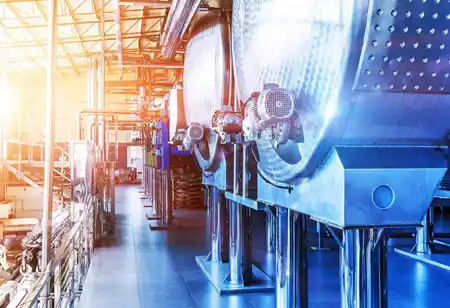As sustainability becomes a paramount global concern, the chemical industry is taking significant steps towards adopting environmentally friendly practices and reducing its ecological footprint.
FREMONT, CA: While progress has been made, the industry faces complex challenges that demand innovative solutions to ensure a more sustainable future.
Progress in Green Chemistry: Green chemistry, characterised by developing products and processes that minimise environmental impact, has emerged as a beacon of hope in the chemical industry's sustainability journey. Companies increasingly invest in research and development to create cleaner, safer, and more efficient chemical processes. This includes the reduction or elimination of hazardous chemicals and the promotion of safer alternatives.
Collaboration between academia, industry, and regulatory bodies has led to development of new chemicals that are less harmful to human health and the environment. Examples include bio-based plastics, biodegradable surfactants, and eco-friendly solvents that are making their way into various applications.
Circular Economy Initiatives: The concept of a circular economy, where products are designed for longevity, reuse, and recycling, has gained traction in the chemical industry. Companies focus on developing products and materials with end-of-life scenarios in mind, thus minimising waste and conserving resources.
Chemical recycling technologies are being explored to transform plastic waste into raw materials for new products. Initiatives like chemical upcycling hold the promise of tackling the plastic waste crisis and contributing to a more circular plastics economy.
Energy Efficiency and Emissions Reduction: The chemical industry also targets energy consumption and emissions reduction. Efforts to improve energy efficiency within manufacturing processes not only reduce carbon emissions but also cut operational costs. Innovative technologies such as electrification, hydrogen fuel cells, and carbon capture are being researched and implemented to lower the industry's carbon footprint.
Challenges on the Path to Sustainability: Despite the progress, the chemical industry faces multifaceted challenges on its path to sustainability. One of the foremost challenges is the sheer complexity of chemical processes and supply chains, making it difficult to implement sweeping changes across the board.
The transition to sustainable practices also requires significant research, technology, and infrastructure investments. Companies must navigate financial constraints while adopting cleaner technologies that might not yield immediate returns.
Regulatory hurdles also play a role. Compliance with varying international regulations and standards can be cumbersome for multinational companies, often leading to delays in adopting sustainable practices due to concerns about competitiveness and market access.
Balancing Economic Viability and Sustainability: Striking a balance between economic viability and sustainability remains a critical challenge. Sustainable alternatives often come with higher costs, potentially affecting profit margins and competitive pricing. The industry must find ways to promote sustainable products without compromising profitability.
Moreover, consumer demand for sustainable products is only sometimes across all sectors and regions. Companies must navigate the delicate balance between catering to evolving consumer preferences and meeting the unique needs of different markets.
Conclusion: A Path Forward with Collective Efforts: The chemical industry's journey toward sustainability is undoubtedly encouraging, yet the road ahead is riddled with complexity. Collaboration between industry stakeholders, government bodies, and the scientific community is paramount to overcoming the challenges. Robust research and development, policy support, and incentives can foster the innovation needed to drive the industry toward more sustainable practices.
As the chemical industry continues to evolve, its commitment to sustainability is an imperative response to global environmental concerns. While challenges persist, the industry's strides towards cleaner practices are a testament to its willingness to address its role in building a more sustainable future.

